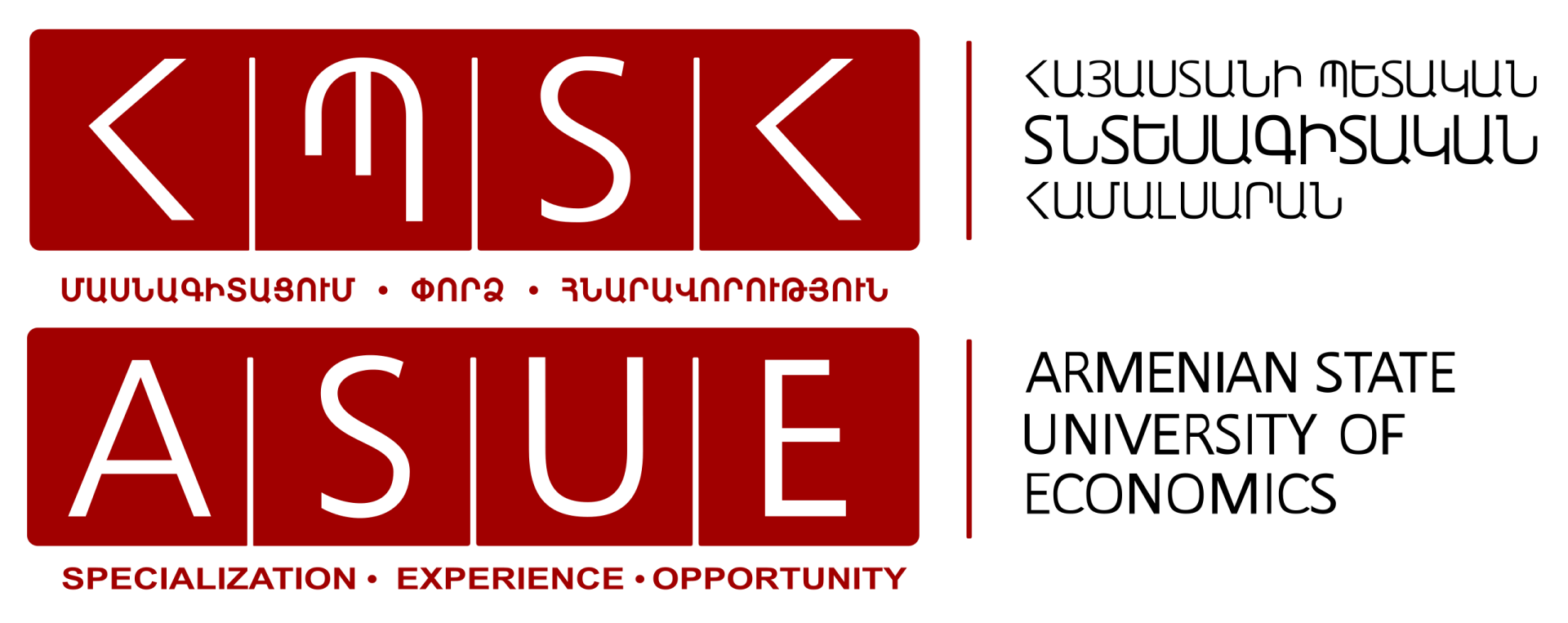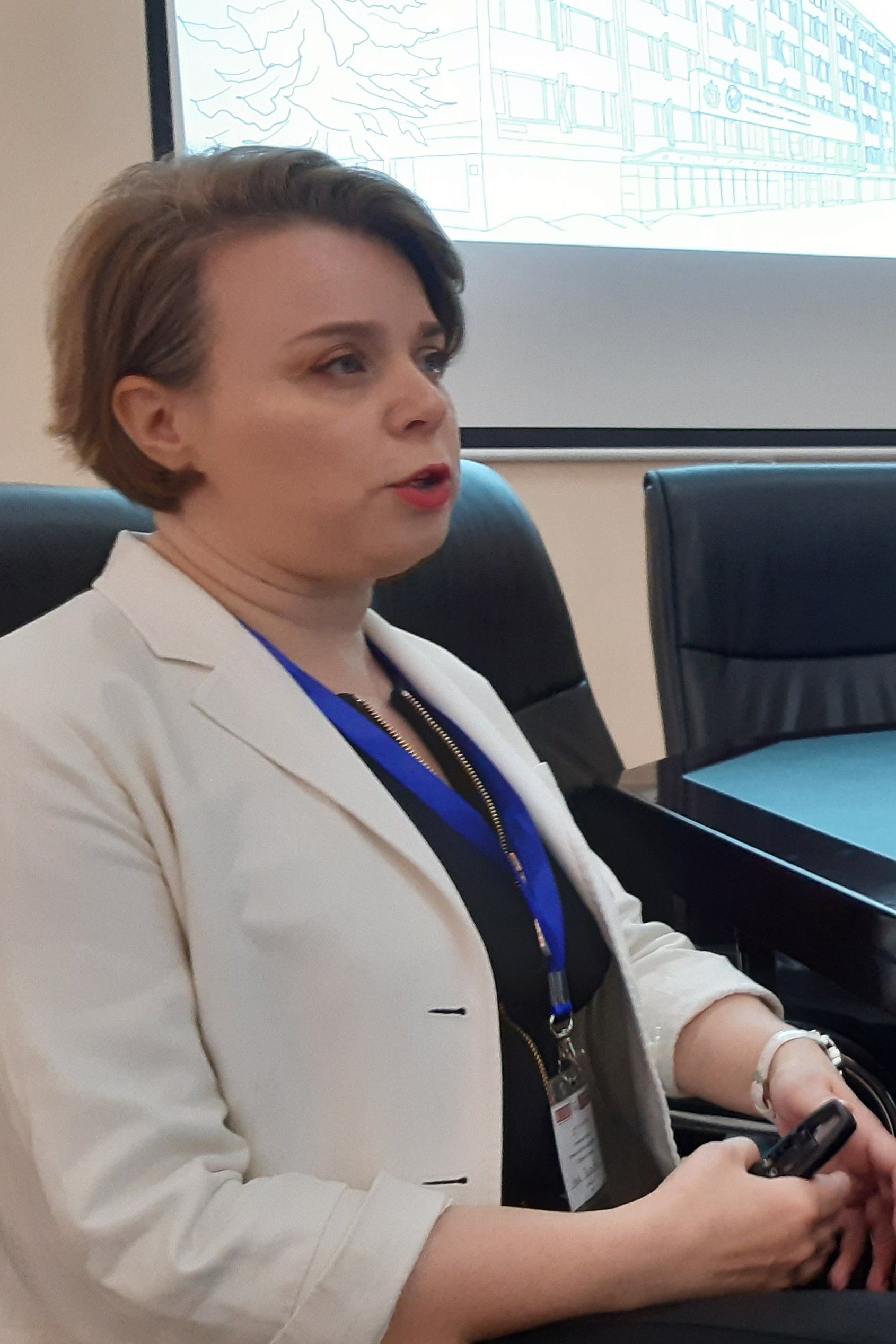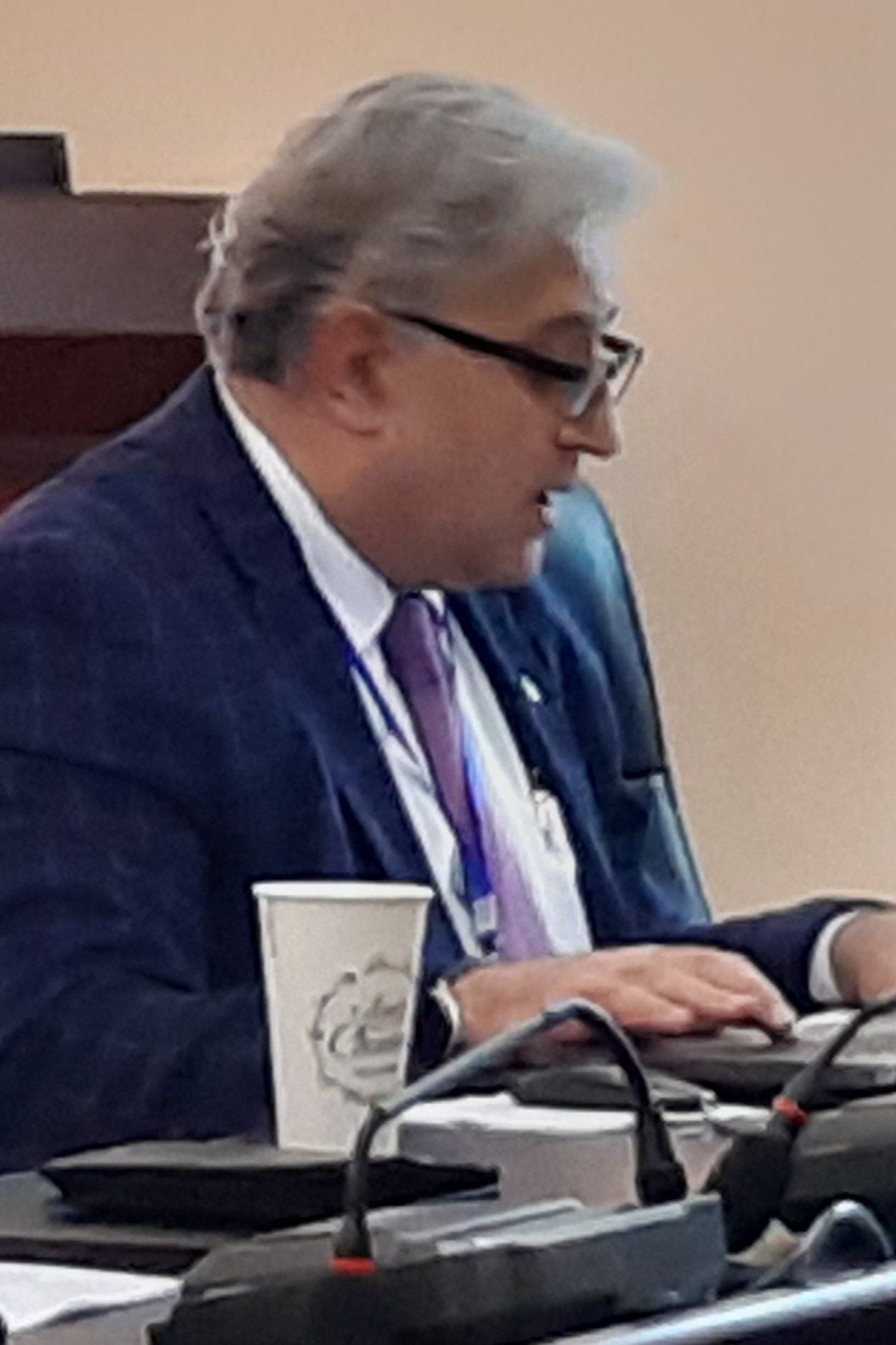NThis conference was organized in cooperation with...

and funded by:

Welcome speeches and greetings
Welcome speeches were given by Ralph Wrobel, project coordinator, and Diana Galoyan, ASUE rector, greetings by Viktor Richter, German ambassador, and Fan Yong, Chinese ambassador. “I am delighted to be here and would like to express my gratitude to ASUE for the organization of such a high level conference as well as Volkswagen-Foundation for its funding”, Ralph Wrobel pointed out, for instance.

From the left: C. Brauweiler, Zwickau, S. Khachikyan, Yerevan, R. Wrobel, Zwickau, D. Galoyan, ASUE rector, Yerevan, V. Richter, German ambassador, and F. Yong, Chinese ambassador both Yerevan.
Keynote Session

Jiang Hongzhen (Shanghai Jiao Tong University, China):
"The legal aspects of the Belt and the Road Initiative"*

Aim is to advance the conceptual thinking and legal understanding of the law of the Belt and Road Initiative. Through a conceptual legal approach, I argue that the law of the Belt and Road Initiative is somewhat between two poles, between soft and hard law, politically and legally binding, flexibility and rigidity. The central finding is that China draws on the current legal order to develop a partnership-based relational arrangement that is primarily bilateral and based on soft law. The latter is a more flexible, unconditional, open, and inclusive tool for Belt and Road Initiative participating countries.
* The presentation was given online!
Ralph Michael Wrobel (University of Applied Sciences Zwickau, Germany):
“The Chinese Belt and Road Initiative between economics and geopolitics: consequences for Armenia”

Armenia has already signed some agreements with China to participate in the BRI project while no concrete measures are financed by the initiative. But what are the economic advantages and disadvantages of the BRI? While funding of some for Western financiers unattractive projects by China is a good chance for some participating countries a resulting “debt trap” is dangerous for them. Additionally, it can be shown easily that China’s investments have mostly some geopolitical aspects which make the projects more advantageous for China than for the participating countries themselves. Especially, when in the BRI participating countries cannot pay back their debts a transfer natural resources respective of infrastructure like ports ore pipelines to China may be the consequence.
Sos Khachikyan (ASUE Yerevan, Armenia):
"Spatial Administration and Digital Agenda of One Belt, One Road Project: Innovative Solutions for Armenia"

The art of public policy through spatial principles has important features in the age of digitalization. Networking and spatial particularities generate new administrative principles. In this sense, the spatial administration is proposed to define as a systemic process of planning, procedures-developing and policy-making in country (internal) or transnational (external) levels without deep integration, based on scale, flexibility and value chain. The Chinas Belt and Road Initiative is a project, in which is possible to integrate spatial components of countries which have different social, national, ethnic or religious dimensions, as well as various economic or political platforms. We consider that Belt and Road project is possible to integrate with the Armenian North-South Road Corridor program and introduce new economic policy.
Liana Marukyan
(Yerevan State University, Faculty of Law, & Project Coordinator, Konrad-Adenauer-Foundation):
"The Legal Cooperation between EU – Armenia in the Context of CEPA: Perspectives and New Horizons"

The EU’s relations with Armenia are based on the EU-Armenia Comprehensive and Enhanced Partnership Agreement (CEPA), which was signed on November 24, 2017, and entered into force on March 31, 2021. Within the framework of this agreement, the cooperation of the European Union and Armenia in various spheres is envisaged. The EU’s support, in particular for the development of democracy, the protection of human rights, and the establishment of an independent judiciary is very important for the Republic of Armenia. The article with the above title aims to present in detail the existing priorities in the legal field, the achievements already registered in this field, to consider the prospects and opportunities for deepening sectoral cooperation.
Ali Arpanahi (London, Iran):
"Perspectives of Armenian - Iranian Economic relations within Belt and Road Initiative"
Armenia-Iran North South Transport corridor is vital for Iran and Armenia and also for all parties involved. Armenians must take into account the geopolitical factors, too. Political and geopolitical interests are shifting; new developments are occurring in the region and such developments would have an impact on international trade. Recently, the Pakistan-Azerbaijan-Turkey axis has pushed India to increase its interest in Armenia and would like to see the INSTC passing through the Armenian territories, keeping in mind that Armenia is also the only country in the EEU that has a land border with Iran. Taking into account Iran’s desire to become a full member of the EEU in the future, as well as India’s interest in the EEU structure and possible future membership, Armenia’s chances of joining regional trade projects would be high.
First Session: Experiences from Central Asia and Russia
Anna Tarasova (Volga State University of Technology, Yoshkar-Ola, Russia)*:
"Russia´s Experiences with BRI: challenges for Business"

* According to the current regulations of the Volkswagen Foundation the speaker was NOT funded from the conference budget!
Since the Belt and Road Initiate was unveiled by the China’s President Xi Jinping in Astana Russia has been uncertain and suspicious about further actions on integration and China’s world superiority. The two countries managed to reach the state of partnership built on mutual interests, compatible perspectives and shared appreciation. The Kremlin administers the BRI as a drive for luring investments to Russia to bolster the country’s shipment capacity. However, there are still many things that would be dependent primarily on business readiness to collaborate. Furthermore, Governmental actions will be driven by local economic factors and municipal policies. Some of the Russia’s regions will be more effected by the BRI others less. The Volga region and the Mari El Republic specifically will not use the investment potential to the maximum, though minor changes concerning the construction of the high-speed railroad could bring advances for the local business. Thus, the author has conducted an analysis of general administrative and economic restrictions, typical for the business environment, defined as systemic problems of the Russian economy. The main limitations on business development, including the development of innovative entrepreneurship, are primarily related to its negative financial and economic characteristics: low solvency of consumers, lack of own financial resources, high cost and difficulty in attracting resources from external sources of financing, significant taxes and fees. The results can be considered typical for a region of Russia, logistically remote from large markets and with low incomes. The outcomes of the study can further be used to build effective communications between government institutions and small business enterprises effected by the BRI.
Hans-Christian Brauweiler (University of Applied Sciences Zwickau, Germany):
"Challenges and opportunities to develop Kazakhstani logistics projects within the BRI"

The BRI initiative presents a colossal opportunity for landlocked Kazakhstan to become a central logistics hub. However, this prospect is overshadowed by geopolitical risks that have escalated since the beginning of 2022. The Ukrainian crisis increased geopolitical tensions on the Eurasian continent and worldwide. Furthermore, it disrupted respectively delayed logistics, as the borders both between Russian Federation and Belarussia on one side and many nations in Europe were practically closed, air traffic has to take huge diversions, increasing time and costs for the freight. A full-scale crisis has global consequences for states and people. Western companies have stopped their activities in Russia. Western countries have imposed unprecedentedly harsh sanctions on Russia. Supply chains can be broken. Chinese companies are concerned that their goods may be stopped at the border between Russia and the countries of Central and Eastern Europe. Because of close economic and political ties with the Russian Federation and membership in the Eurasian Economic Union (EAEU), Kazakhstan is concerned with secondary sanctions. Actually, there is already some impact, as Russian Banks in Kazakhstan have to cope with difficulties in international payments, which rebounds to their (innocent, kazakh and international expatriate) customers. Companies face a particular business risk that can be referred to as “geopolitical risk.” Geopolitical risks are becoming the main problem for the further development of the Eurasian region.
Kyialbek Akmoldoev (Ala-Too International University, Bishkek, Kyrgyzstan):
"How realistic is Belt and Road Initiative for Kyrgyzstan and other Central Asian countries?"

Since the announcement of the “One Belt One Road” (after renamed as Belt and Road Initiative, BRI) grand project by the Chinese president Xi Jinping in 2013, there has been many studies on the impact of BRI initiative to the Central Asian Countries. The aim of this study is to analyze the BRI projects in Kyrgyzstan and its impact on the geopolitical balance in Central Asia. The author sees the BRI project as a way for Kyrgyzstan to escape from the “land-locked” country to the “land-linked” country with western markets. For sure, this project provides opportunities and treats for Kyrgyzstan, and all the risks and benefits from geopolitical perspective were studied within the framework of SWOT analysis.
Second Session: Experiences from the Caucasus Region
Davit Gondauri (Business and Technology University, Tbilisi, Georgia)*:
“Georgian railway’s Experiences with Belt and Road Initiative: advantages and disadvantages”

Georgia’s railway network is a key segment of the TRACECA, the shortest route from the Caspian Sea and Central Asia to the Black Sea and the Mediterranean Basin. Georgian Railway Corridor has a number of advantages over pipeline, alternative railways and auto transport. Changing the quality of crude oil does not occur during rail transportation, no pipelines for oil products. The Russian rail routes have a competitive disadvantage compared to Georgia as Novorossiysk Port is typically frozen in winter and operations are frequently delayed. The Russian and Iranian routes are significantly longer than the Georgian route, which increases costs, risks, and transportation time. The railway route running through Iran is less attractive than the Georgian route due to the tense political relations between Iran and the West. Railway transportation is considered safer and more environmentally friendly than road transportation. Expensive bulk transportation - in cases of bulk transportation, the railway is considered cheaper than the road.
* The presentation could not be given, but a paper will be submitted.
Atom Margaryan, Emil Grigoryan, Harutyun Terzyan (ASUE Yerevan, Armenia):
"One Belt, One Road Project as an Innovative Platform for Technology Transfer: Opportunities for Armenia"

One of the pillars of the Belt and Road Initiative is the deepening of cooperation between member countries, especially in the field of science and innovation. But, what are the historical preconditions for the development of this concept, first? Secondly, what are the priorities and development directions of the initiative in the mentioned context? Third, what development guidelines should be set for the participating countries (Washington, Beijing, etc.). And finally, is there really a connection between infrastructure development and innovation activity? To answer the last question, a correlation and econometric analysis has been performed, the results of which indicate positive effects.
Armen Minassian (National University of Architecture and Construction, Yerevan, Armenia):
"Iran – Armenia Cooperation: BRI as Chance for Regional Cooperation"

Currently, Iran is connecting to Europe through Turkey and there are some conditions like regional insecurity during the previous years and unimodal transportation those are the reasons to require Iran to look for finding alternative connections to the Black Sea through Georgia/ Armenia and Azerbaijan. There are problems with these two options, including: Currently, discontinuity of rail connection to Azerbaijan and limited services are examples of technical difficulties. Azerbaijan purchases Israeli weapons and which is a serious threat to Iran's national security and many other factors like these are the reason for making Azerbaijan an unreliable partner for Iran. Currently, discontinuity of rail connection to Armenia, transportation difficulties for the reason of Low-quality transportation infrastructures, and bad weather conditions for the second half of the year are examples of technical difficulties. There are several reasons for Armenia's preference as a link between Iran and the Black Sea.
Third Session: Both ends of the Belt and Road: diverging experiences
Katja Kalkschmied (Ruhr University Bochum, Germany)
"Challenges and Problems with Chinese lending specifics and BRI projects: A look into data"

Within two decades, China has not only become an important trading partner but also a major creditor and donor for developing countries. This has changed the landscape of development finance, challenging the `offers’ of traditional Western donors and eventually opening new financing opportunities. This article studies Chinese flows of development finance into the world in general and into Western Asia in specific. It draws on a new global dataset on Chinese development finance projects to reveal challenges and problems with Chinese lending specifics and BRI projects and to draw conclusions on how developing countries can seize opportunities and avoid threats in this new lending environment.
Alexander Hess & Christoph M. Hindermann (University of Erfurt, Germany)
“The BRI: Trade Integration and Stock Market Co-Movement? - A Review of Empirical Findings”

In the context of the Belt and Road Initiative (BRI) we examine selected studies that explicitly or implicitly address the question of whether there occurs synchronization of stock markets between China and the BRI economies. Following this, we examine the extent to which this synchronization of stock markets may be driven by bilateral trade. This question is of particular interest to all investors who wish to profit from the BRI while minimizing their risk through portfolio diversification. Our results show that there is plenty of supporting evidence that the stock markets of China and the BRI economies are synchronized, and that synchronization appears to be increasing since the launch of the BRI. We also find that bilateral trade is an important determinant for explaining stock market integration between China and the BRI countries. Based on these results, interregional diversification appears to be less efficient. Further research is needed to determine whether other forms of diversification, such as inter-industry diversification, would be more beneficial.
Jagannath P. Panda (Stockholm Centre for South Asian and Indo-Pacific Affairs at the ISDP, Stockholm, Sweden)
"BRI as a Sovereignty Obstacle: Global Gateway as a Medium of Cooperation between India and the EU"

As an influential rising power and a natural partner to the European Union (EU) in the Indo-Pacific, India has also been wary of China’s Belt and Road Initiative (BRI) projects in its immediate neighbourhood and beyond. Due to India seeing China as an important economic partner and a fierce “systemic rival,” India and the EU will find plenty of common ground in working together on Global Gateway, the EU’s €300 billion international investment project. Additionally, both have increasingly asserted strategic autonomy over the growing need for independence in decision-making amidst ongoing great-power competition. The EU’s intent to expand its presence in the Indo-Pacific was clear at the Thirteenth Asia-Europe Meeting (ASEM), held in November 2021. Global Gateway - which is aligned with the goals of the Build Back Better World (B3W), the UN’s Agenda 2030 and Sustainable Development Goals (SDGs), and the Paris Climate Agreement- intends to provide a value-driven alternative to the BRI. Involving India within an infrastructure development framework would prove lucrative—from diversifying supply chains and engaging in digital transformation to green transitions and inclusivity in development efforts. It can be argued that as co-advocates for the involvement of low and middle-income nations within multilateral development initiatives, India could prove critical to the EU’s attempt at creating a democratic, inclusive, and link-based framework.





